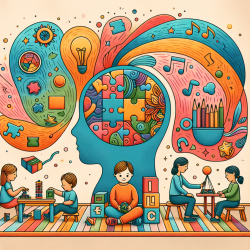The "Ready for R" Kit, reviewed by Lisa Archibald in the Journal of Speech-Language Pathology and Audiology, is a comprehensive tool designed to assist speech-language pathologists (SLPs) in helping children aged 6 to 12 master the challenging /r/ sound. The kit includes 24 full-color laminated cards, a step-by-step instruction manual, and reinforcement charts, all packaged in a durable plastic envelope. This blog will explore how practitioners can enhance their skills by implementing the outcomes of the research presented in the "Ready for R" Kit.
Understanding the Kit
The primary aim of the "Ready for R" Kit is to correct the production of /r/ in children. The manual provides general information about sound development, an introduction to the program, and detailed steps for working on /r/ sounds. These steps include:
- Isolation
- Auditory discrimination
- Word level /r/-initial
- Word level /r/ in blends
- Word level postvocalic /r/
- Sentences
- Conversation
Key Features
The manual is well-organized, utilizing bullets, point form, text boxes, bolding, and italics to make the information easily accessible. It is designed to be parent-friendly, offering general suggestions for daily practice, managing expectations, and dealing with frustration.
Clinical Concerns
One of the primary concerns raised in the review is the difficulty parents may face in correctly identifying and correcting /r/ productions. The /r/ sound is notoriously difficult to teach and produce, even for trained SLPs. Therefore, it is crucial that parents use the kit under the guidance of a professional.
Implementing the Kit in Practice
For practitioners, the "Ready for R" Kit can be an invaluable resource when used correctly. Here are some steps to maximize its effectiveness:
- Initial Assessment: Conduct a thorough assessment of the child's current /r/ production capabilities.
- Parent Training: Educate parents on the basics of sound development and the specific challenges of the /r/ sound.
- Guided Practice: Use the kit's materials during therapy sessions to model correct /r/ production.
- Home Practice: Provide parents with specific instructions and monitor progress regularly.
- Customization: Be prepared to modify the program based on the child's unique needs and progress.
Encouraging Further Research
The "Ready for R" Kit is a well-designed tool, but it is not a one-size-fits-all solution. Practitioners should be encouraged to conduct further research and customize their approach based on individual needs. Here are some research questions to consider:
- How effective is the "Ready for R" Kit compared to other /r/ correction methods?
- What modifications can be made to improve its effectiveness for different age groups?
- How can technology be integrated into the kit to enhance learning?
Conclusion
The "Ready for R" Kit offers a structured and engaging approach to /r/ sound correction. By understanding its features and limitations, practitioners can effectively guide parents and children through the challenging process of mastering the /r/ sound. For more detailed information, you can read the original research paper by following this link:
"Ready for R" Kit (2000).










